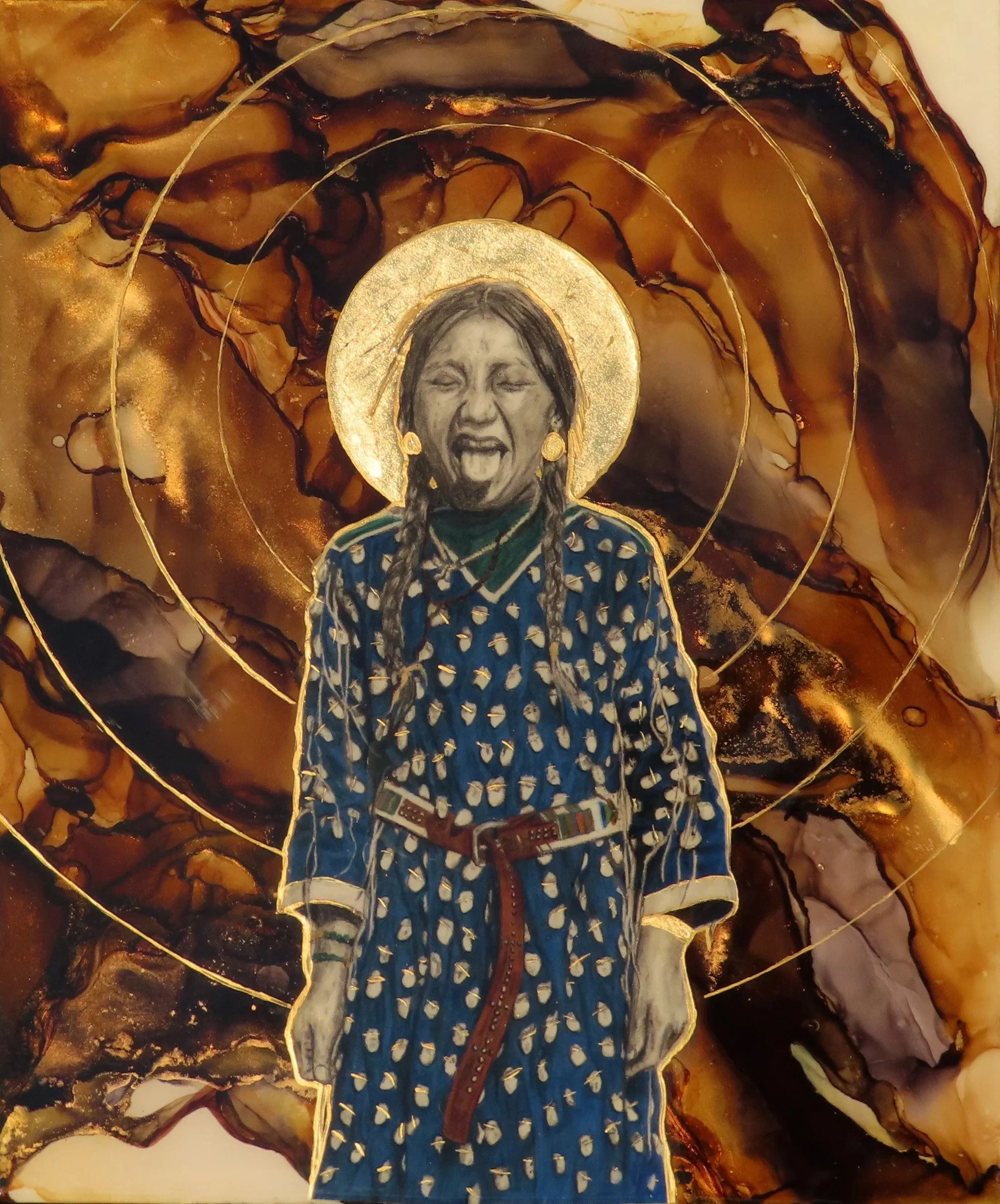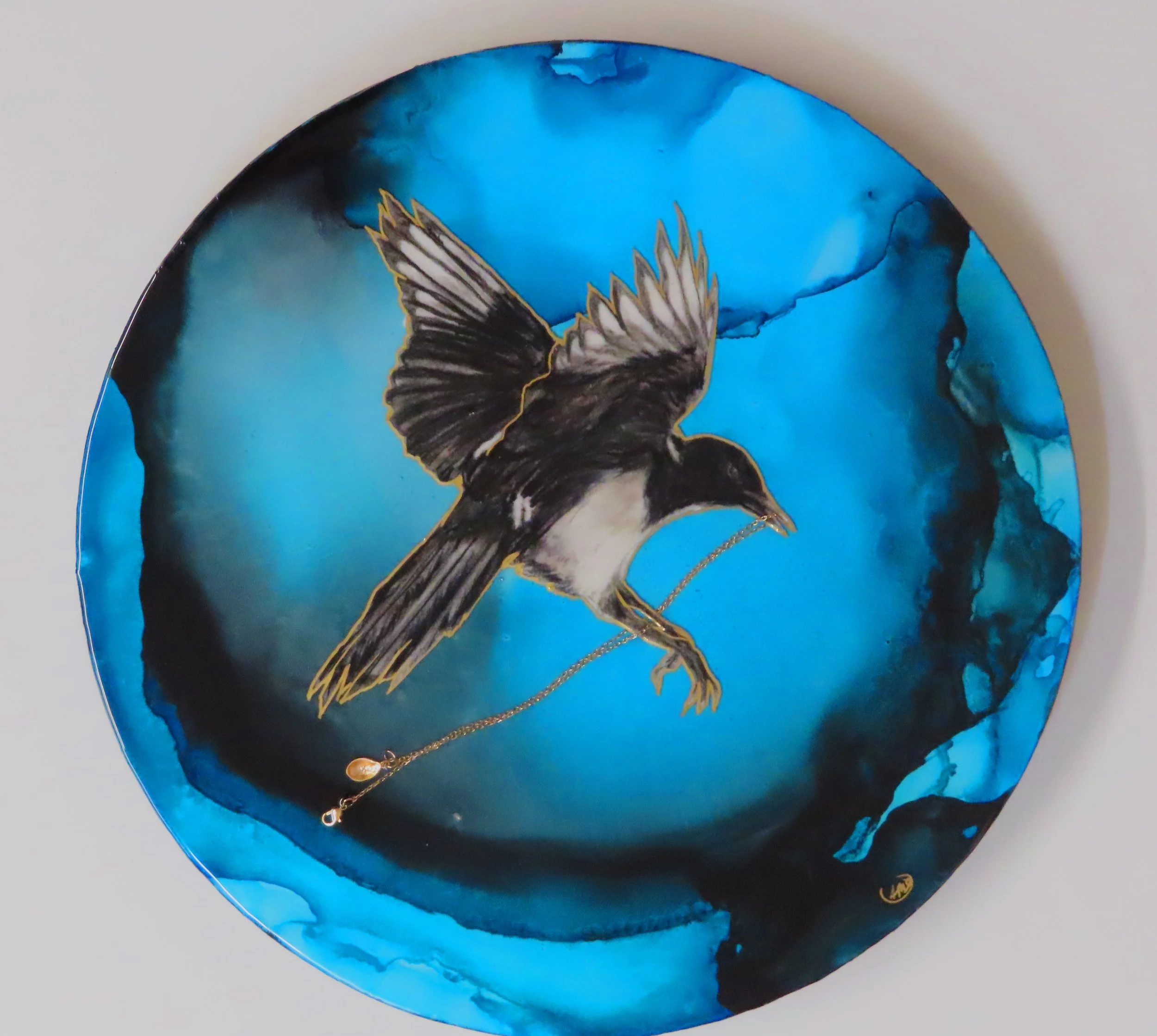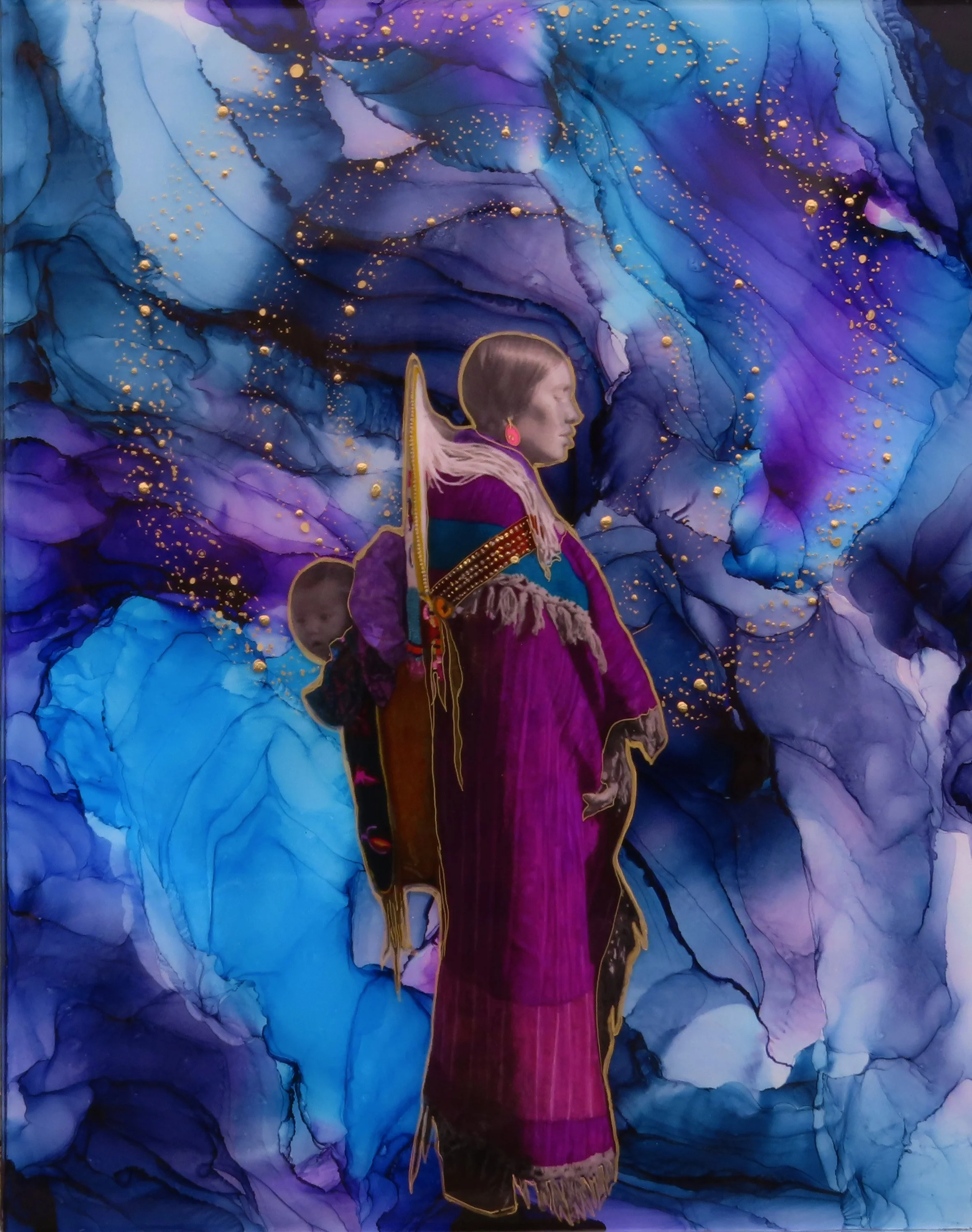
Indigenous Art from an Indigenous Perspective
Upcoming Events
Upcoming Events
Holiday Show at the Radius Gallery
Holiday Show is LIVE at Radius Gallery! I have five pieces in the show QwiQway “Buffalo” Dreams, Las Mujeres, The Acquisition, In F(l)ight, that will be rotated through the exhibition!
QwiQway “Buffalo” Dreams- 24”x36”
Mixed media - Charcoal, resin, porcupine quills, gold leaf on panel
Las Mujeres- 14”x14”
Mixed Media - charcoal, ink, butterflies, resin on panel
The Acquisition- 14 inch round wood panel
Mixed Media - ink, resin, charcoal, gold necklace
Indigenous Made Montana Winter Market
Indigenous Made Missoula is back! I will be at the Missoula Fair Grounds on November 29th and will arrive with cards, stickers, prints, shirts, and a few originals! Shop early and shop often!
New Prints, Cards, and Stickers
-

New Cards and Stickers
Independence Card
-

New Prints
Sarah Grandmother’s Knife
-

Prints
Lake McDonald Print
-

New Greeting Cards
New Greeting Cards
Available Paintings
Connect with the Original Paintings For Sale page to see the full list of available paintings. Email BringsYellowArt@yahoo.com for inquiries.
Sarah Grandmother’s Knife
1910 Sarah was 10 years old when she was photographed in the image that this painting is based off of. Sarah is a Crow/Absaalooke girl who grew up and lived her entire life on the Crow Reservation in Eastern Montana. Due to her age, Sarah was one of the first generations of Crow children who would grow up on the Reservation instead of moving throughout the traditional homelands.
Due to the U.S. Government’s policy of forced removal, genocide, and forced assimilation in order to displace or remove Indigenous people from the land and then open it up for settlement Sarah would be living through a time of great transtion and turmoil for Native American people. She would be one of the first generations to attend boarding schools, be restricted from leaving the Reservation, and she would live through the illegalization of traditional Native American practices and ways of life. Despite living through these extraordinary experiences Sarah goes on to live to her late 50’s, primarily in Lodge Grass, Montana. Records state that she had 2 husbands and 8 children and relatives state she was a wonderful kaala (grandmother).
I chose to paint Sarah because despite her circumstances, Sarah chooses to pose for a portrait with familiar childhood joy and abundance of expression. She is unapologetically sticking her tongue out for the portrait in a time period where most photographers (especially those photographing Native Americans) required their subjects to be serious, stoic, and quiet. Her joyful expression, while most likely a byproduct of being a 10 year old girl being asked to sit still in the hot summer sun, serves as an act of resilience in the face colonization and oppression.
“Sarah Grandmother’s Knife” will be at The Russell this March.
The Acquisition is available Radius Gallery.
The Acquisition
The Acquisition features a magpie mid-flight stealing a necklace. Magpies come from the Corvid family and are known for their spitefulness and intelligence, making them my favorite type of bird. Magpies are territorial all year round even outside of mating season, They also use tools, imitate human voices, can recognize humans and will accept gifts as well as give them.
The Acquisition is part of Radius Gallery’s Holiday Show and is available for purchase.











